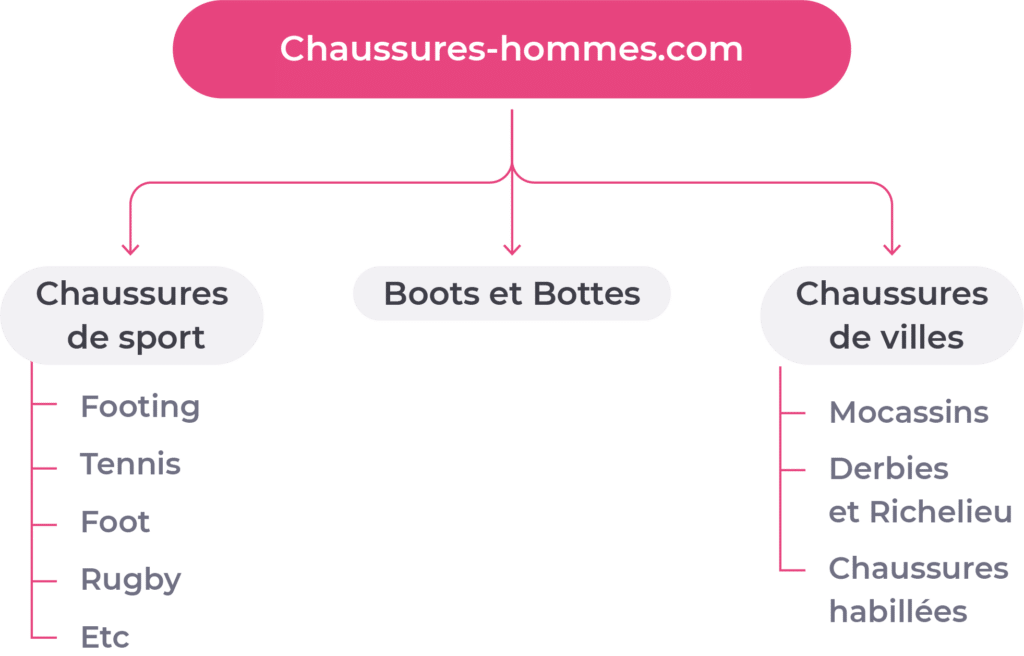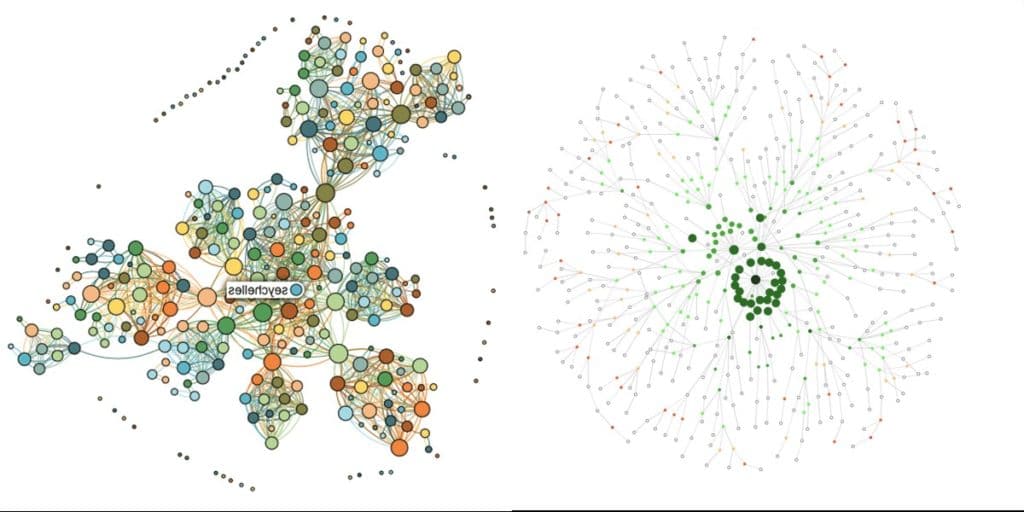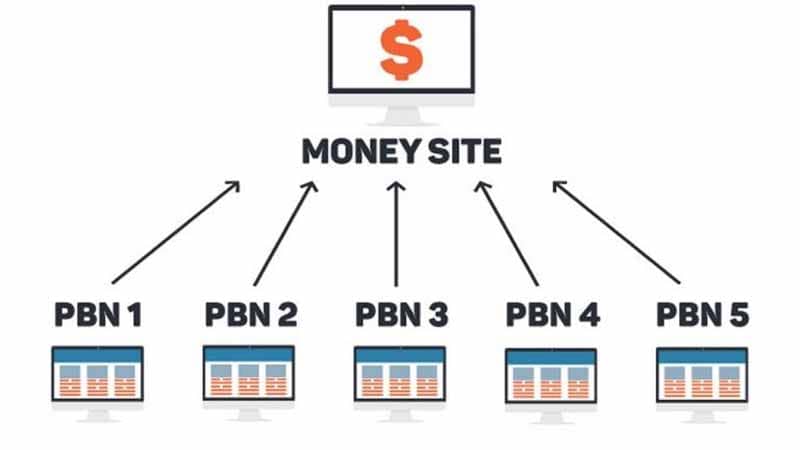When researching which SEO strategy to adopt, it is difficult to decipher all the trends. However, the semantic cocoon is a strategy that pays off, as it uses the power of internal linking to rank a site, even on ultra-competitive queries. What do you need to know about semantic cocooning? In this article, we explain the concept and how to make your semantic cocoon profitable. You will learn all about the advantages and disadvantages of this SEO method. We'll even give you a tip on how to take your strategy even further and make it pay!
What is a semantic cocoon?
The notion of semantic cocoon refers to the organisation of a website in the form of clusters of content based on similar semantic ideas. The idea behind the concept of the cocoon is to prove one's expertise to search engines and Internet users by proposing skilfully hierarchical content: the top of the chain is generalist, and the further down the link levels, the more targeted and specific the content will be.
Building a website architecture around search intent is an SEO strategy that works extremely well before the creation of a site, during a total redesign or following a Google penalty. As Olivier Andrieu says in his detailed videos, many webmasters claim that their content is organised in semantic cocoons when in fact very few master this strategy. What concept is the cocoon opposed to?

What is the difference between semantic cocoon and thematic siloing?
The thematic siloing strategy is opposed to the semantic cocoon strategy. Indeed, the latter is not based on themes represented by keywords, but on groups of pages where the semantic field is developed according to the most searched queries on Google.
Reminder on thematic siloing to better understand the semantic cocoon strategy
Thematic siloing is the most common technique for organising web pages. On all large websites, content is organised around themes. On e-commerce sites, for example, thematic siloing is obvious, because the pages are organised around product categories. For a DIY e-shop, there are categories such as garden, decoration, house, tools. The pages of each silo all depend on the category page and are generally closed to other silos.

In summary, the thematic siloing strategy is based on the thematic offer, whereas the semantic cocoon strategy is based on the requests of Internet users on Google.
How to build an effective semantic cocoon?
Several steps are necessary to build a site with impeccably meshed content organised in a semantic cocoon. Before looking at the instructions, let's clarify the specific terms used in this strategy.
What does a semantic cocoon look like in practice?
The aim is to correctly mesh all the pages by prioritising them around a query. Here are the levels of the pages making up a semantic cocoon:
- The target page: this is the highest page in the tree structure. Its objective is to rank on a general query. You will see that it requires a Dantesque amount of work, both in terms of graphics and in terms of the richness of the writing, A/B testing and so on.
- Intermediate pages: their role is to push the target page or another intermediate page by grouping the lower pages (the remote pages).
- Remote pages: these are the final pages that aim to push the intermediate pages.
The links must then connect the target page to intermediate pages which will themselves be linked to the remote pages. It is also important to think about the internal links between parent pages and between sister pages. How to organise the different levels of the semantic cocoon? What should you think about when you want to build an effective internal mesh? Find out now how to get started with this Google-friendly SEO strategy.

What are the steps to follow to build a semantic cocoon website?
1. Determine the main intent or idea to be developed and ranked. Chances are, the resulting query will be highly competitive.
2. Analyse the competition and its difficulty and then set a number of pages to include in your cocoon.
3. Make a list of topics for each web page in the cocoon.
4. Classify these pages into three levels: target pages, intermediate pages and remote pages.
5. Establish a thoughtful and coherent link between all these pages.
6. Produce or have produced your content optimised for referencing. Diversify the types of content as much as possible: texts, videos, podcasts, infographics, etc.
7. The SEO strategy of the semantic cocoon can be expensive: copywriting, graphics, video production, etc... Make sure you have the means to match your ambitions, this is crucial to the success of this SEO strategy.
Succeed with your semantic cocoon strategy by respecting the golden rules
What are the golden rules to follow to ensure that your semantic cocoon is profitable? There are three things that you absolutely must take care of in order to succeed with your semantic analysis. What are they?
Brainstorm thoroughly and prioritise empathy with the user
Since the semantic cocoon is an SEO strategy that focuses on search intent, it is important to target the right audience. To do this, build a complete and rich buyer persona.
Put yourself in the shoes of the Internet user searching on Google. You will need to think about every question, every objection and every search related to your target query. To do this, use tools such as Answer The Public, Qora to give you ideas. Also use the Google suggestions in the footer, the " People also ask" You can deepen the brainstorming by associating ideas.

Strictly budget all costs
Building your SEO strategy on a semantic cocoon costs money. Indeed, you will have to work on dozens and dozens of pages for the links to be effective in ranking the target page. The latter must also be extremely complete, rich and dense. This will involve the work of an experienced copywriter, a graphic designer, a photographer and even a professional videographer.
Intermediate and remote pages will cost less, but it is necessary to inject the quality that will please Google and visitors. So, leave the writing to a professional and don't skimp on the quality of each page.
The cost of your semantic cocoon can easily reach several thousand euros! So think about budgeting everything upstream to carry out your project without fear of the financial obstacle.
Building a page according to a precise architecture
Laurent Bourellythe inventor of the semantic cocoon concept, recommends a precise architecture for each page. This way, the internal linkage will be effective. There is nothing magical about this structure; it is based on the mechanisms for calculating Pagerank. Indeed, links do not have the same power depending on their place on the page. The strategy that works? Place :
- at the beginning of the page a link to the homepage;
- in the body text, in the middle, links to intermediate and remote pages;
- at the bottom of the page links to sister pages.
Of course, these recommendations are only a summary of the complete theory on the subject. After reading this article, don't hesitate to deepen your knowledge thanks to the big names in SEO, such as Bourelly, Andrieu or the Peyronnet brothers!
The advantages and disadvantages of a semantic cocoon strategy in SEO
Taming Google with the semantic cocoon is not a smooth ride! Now that you know how this powerful SEO strategy works, let's weigh up the benefits and drawbacks of this choice. natural referencingstrategy, let's weigh up the benefits and drawbacks of this choice.

The benefits of an SEO strategy based on the semantic cocoon
Producing dozens of semantically rich pages and diverse content pays off! Why should you start a semantic analysis for your website today? The benefits of the semantic cocoonare numerous:
- The ability to rank on highly competitive queries;
- Offer search engines exactly what they want: by treating the universe of a query in depth, you ensure that you offer an answer in the many related contents;
- Facilitate the crawl of Google robots thanks to a very structured organisation;
- Reduce the netlinking budget to achieve the same results.
The disadvantages of SEO optimised by a semantic cocoon
Despite appearances, the semantic cocoon is (perhaps) not the magic method that will propel your website into the Google SERP. It is important to understand the shortcomings of this system as well. That way, you can make informed decisions about your SEO strategy!
- No one can know how long this system will be effective. The semantic cocoon is still an SEO strategy that manipulates the algorithm. The multiplication of links and exact anchors is quite tolerated by the search engines and by the law. However, we are not immune to a radical change in the Google algorithm.
- The budget for setting up a semantic cocoon is considerable. Even if you use the automatic generation of GPT-3 content by artificial intelligenceEven if you are using a semantic cocoon, you need to be able to ensure quantity and quality at a constant level of excellence. Layout and graphics are of paramount importance and costly. Video production is also very resource intensive.
- Unlike other SEO strategies, there is no room for error in your semantic cocoon. The rest of your website must adhere perfectly to the architecture of the cocoon. For example, "mega menus" with dozens of anarchic links will be counterproductive and will destroy your efforts invested in the cocoon.
My site is structured in semantic cocoon, how can I go further in my SEO strategy?
Now that the hard work is done, you want to take the semantic cocoon concept even further? Invest in new semantic cocoons! We know that the popularity of Page Rank is known to transfer even better between carefully organised domains. To increase the SEO power of your semantic cocoon, here are the steps to follow:
- create several semantic cocoons outside the domain you have been working on;
- linke your cocoon on your money site: bravo, you have just created a Private Blog Network!

Make sure you stay semantically close between websites, as the transfer of authority will be smoother and more rewarding for Google. In this case, save time by only buying expired domain names that already have a good authority score.
Conclusion: how to satisfy Google and maximise your referencing thanks to the semantic cocoon?
What should we remember about the concept of the semantic cocoon? It is an SEO strategy that works very well, provided that :
- Brainstorming Google search intentions correctly by engaging in an extensive persona exercise;
- Classify the pages well by hierarchical level (target, intermediate, remote) and organise all the linking on a mindmap to find your way around;
- Respect the structure of the pages by taking into account the weight of the links on a page;
- Surround yourself with competent professionals for the production of all your content;
- Budget precisely for the implementation and maintenance of the semantic cocoon;
- Know the advantages and disadvantages of the semantic cocoon in order to decide whether or not to embark on this titanic task;
- Think even further than the original strategy, by thinking of PBN if you want to reinforce several semantic cocoons!
To find out more about this concept invented by Laurent Bourelly, you can learn from the source, or get information from the Peyronnet brothers or evenOlivier Andrieu.
And if you want to set up a semantic cocoon while saving time, contact us. Ingenius can help you develop your website 's ranking !




